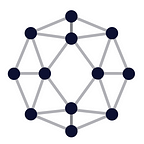Understanding DARMA Capital’s Investment Thesis and why we chose Ether as our first asset to “Optimize Long”
Below is an excerpt of DARMA’s Ethereum Investment Thesis, please request the complete document here and review all applicable disclosures.
Introduction
Digital Asset Risk Management Advisors (DARMA Capital) seeks to optimize investments in the largest, most regulatory-defined and liquid digital assets associated with the dominant protocol layers of Web 3.0.
DARMA’s thorough and multifaceted research process identifies digital assets with the strongest case for investment. DARMA equally evaluates the risks associated with those digital assets to determine which digital assets warrant a core holding.
For the Smart Contracts Protocol Layer, Ethereum has a first mover advantage and is the platform on which a majority of decentralized applications are being built. As Ethereum becomes the modern infrastructure for Web 3.0 and mobile applications, the market demand for Ethereum continues to increase.
Background: Blockchain Technology and the Evolution of Web 3.0
Blockchain technology offers solutions and efficiencies never imagined would be needed.
When the Internet was created decades ago, no one could fathom what store of value data would hold, whether it be personal, corporate, or government information. Neither could be foreseen the many challenges of online data protection, availability, and delivery. The original Internet protocols (TCP/IP and HTTP) defined how computers communicate to deliver data, and not how it is stored.
Today we live in a digital economy where our most important personal information is controlled by private companies. Application goliaths, including Facebook, Amazon, Netflix and Google, developed programs that capture and store all of the structured and unstructured data that users produce. These large centralized institutions have created private networks which they control and profit from user data.
For this reason, today, value is captured mostly from the Application Layer in Web 2.0.
Value Capture Today and Evolving
In the decentralized, protocol-based framework of Web 3.0, the most significant digital asset investment opportunity, or ‘Value Captured’ lies in the Protocol Layers.
We trust giant corporations to intermediate almost every move we make online, and this concentration of control over data is a core flaw in today’s Internet. The original Internet protocols do not provide end-to-end security. Centralized data hubs are primary targets for cyber theft and hacking. In addition to their vulnerability, the antiquated, centralized structure of data ‘intermediaries’ is limited and restrictive. This limitation is addressed by blockchain technology.
There are obvious regulatory and incumbent hurdles to overcome, yet blockchain technology has the potential to transform the Internet by creating greater efficiencies for data validation, delivery and security. As a decentralized and distributed infrastructure, blockchain offers a complete restructuring of the world’s record-keeping paradigm.
In the evolving Blockchain Web, or ‘Web 3.0’, no single entity controls all records of data. Not only does the distributed architecture of blockchain offer more data protection, it also presents endless possibilities and new solutions for tracking data flow.
In Web 3.0, the protocol layer is ‘peer-to-peer’ (P2P), meaning each computer on the network becomes a file server as well as a client. The individual benefits and the decentralized protocol layer has value by supporting the network.
For this reason, in the evolving blockchain web, value will be captured mostly from the Protocol Layers in Web 3.0.
The Importance of Blockchain Protocols and their Monetization
Consensus protocols are one of the most important and revolutionary aspects of blockchain technology. They dictate how all people, governments, businesses and computers exchange value with each other.
Before Web 3.0, the underlying protocol layer did not generate economic value for itself or its creators. Now, Blockchain technology and ‘cryptographic tokens’ allow the protocol layer to be monetized and ‘aware’ of the value it is creating.
This monetization of protocol layers is a key driver for the paradigm shift from today’s Web 2.0 to Web 3.0 and the basis for DARMA’s investment thesis.
Think of blockchain protocols as a railway system: Blockchain applications are the train-service companies that run on that system. The applications have to ‘pay’ to use the system on which they operate.
Ethereum is a protocol, and various decentralized applications (DApps) are built upon it. The value of these protocols is expected to increase as their adoption and usage grows. Protocol tokens or coins are cryptographic tokens that are required to access the service that the underlying protocol provides.
This is causing the shift in Web 3.0 from formerly ‘thin’ protocol layers, which used to have little economic value, to ‘fat’ protocol layers poised to capture the lion’s share of value.
The 5 Primary Protocol Layers of Web 3.0 in Development
- Mesh Networking — Routes data to and from clients using infrastructure nodes that communicate with each other.
- Messaging — Setting rules, formats and functions for exchanging messages between the components of a messaging system.
- Computation — The ability to lend and borrow computational resources to perform complex computations and tasks such as computer generated imagery (CGI) rendering, machine learning (ML), and natural language processing (NLP).
- File Storage — A network designed to create a content-addressable, peer-to-peer method of storing and sharing hypermedia in a distributed file system.
- Smart Contracts — Enables parties to conduct transactions and exchange value amongst themselves.
For each Protocol Layer, a dominant digital asset may emerge with the strongest characteristics for investment.
For more information on why we chose Ethereum as our “Optimized Long”, please go to our website and request our Ethereum Investment Thesis here.
This post was an excerpt of DARMA’s Ethereum Investment Thesis, please request the complete document here and review all applicable disclosures. DARMA Capital is a member of NFA and is subject to NFA’s regulatory oversight and examinations. However, you should be aware that NFA does not have regulatory oversight authority over underlying or spot virtual currency products or transactions or virtual currency exchanges, custodians or markets.
